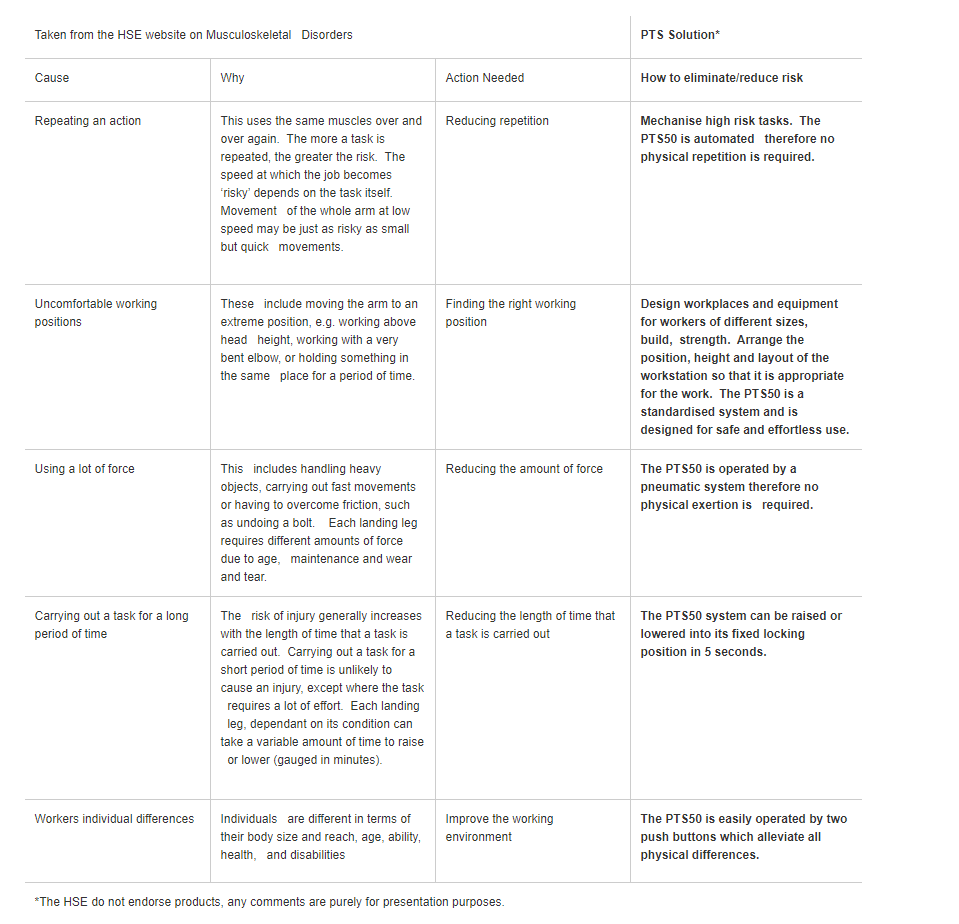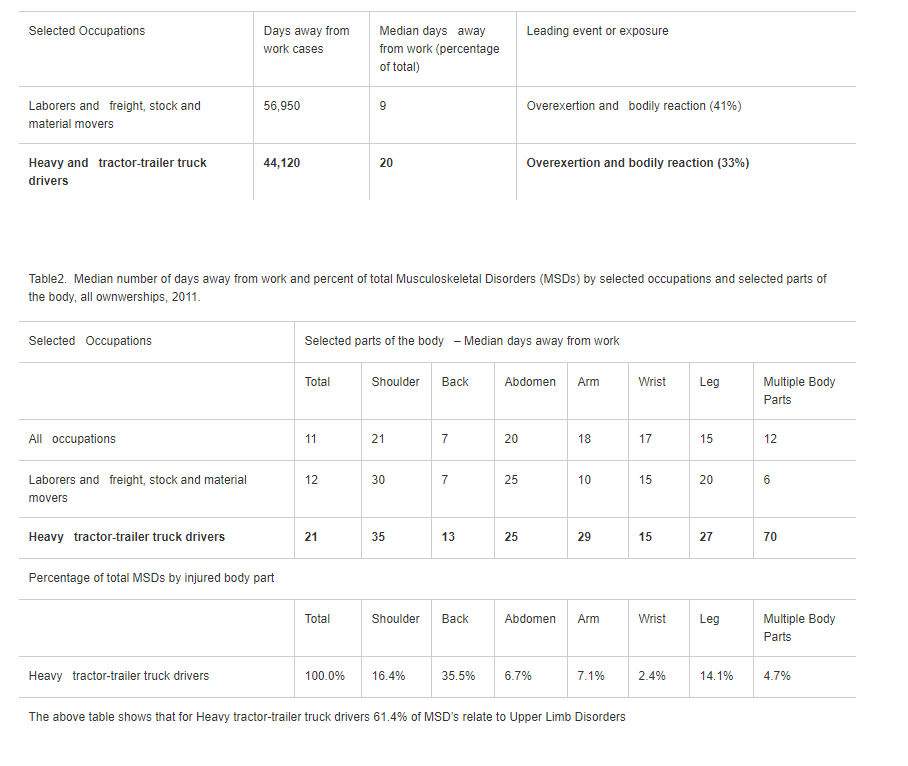As we all know Health and Safety plays a major role in today’s workplace and employers have a duty of care to their employees to reduce or eliminate risks and dangers when new technology becomes available that creates a safer working environment .
At Prime Transport Solutions we are delivering you an innovative development by taking away the manual work involved in operating a current trailer hand wound landing leg. The Pneumatic PTS50 operates at the push of two buttons, allowing you to safeguard your employees from upper limb disorders and protect your company from employee sick days and expensive claims due to work related accidents and injuries.
Upper Limb Disorders/Repetitive Strain Injuries – as described by the HSE
What’s the difference between ULD and RSI? – They basically refer to the same conditions, although the term repetitive strain injury (RSI) is used by some to refer to pain/strain in the arm. The term ULDs covers a range of over 20 medical conditions. HSE prefers to use the general term ULD because problems might not be due to strain and there may not be any sign of injury.
What type of work can lead to ULDs? – ULDs are widespread across a range of industries and jobs. Any type of work that involves a worker using their arms to carry out a task can lead to ULDs
What causes a ULD? – It can be caused by a variety of work tasks involving, for example, forceful or repetitive activity, or by poor posture. The way that the work is organised and managed can cause ULDs as well as make them worse.
Managing ULDs – As an employer, you have a legal duty under the Health and Safety at Work Act 1974 and Management of Health and Safety at Work Regulations 1999 to prevent work related ULDs or to stop any cases getting worse. If you do not manage the risk of ULDs to workers you run the risk of legal action and possible compensation costs.
ULDs can be successfully managed in the workplace by: Assessing the risks – this means looking around your workplace to see which jobs may cause harm. Reducing the risk of ULDs – this could mean changing the way work is organised/carried out.
The main areas that are likely to increase the risk of ULDs are listed in the table below. They can interact with each other to increase the risk. To the right of the table are ways the PTS50 can decrease the risk of ULDs.

Taken from the United States Department of Labor – Bureau of Labor Statistics Published 8th November 2012.
Key findings – Occupational injuries and illnesses to workers in five occupations including heavy and tractor-trailer truck drivers accounted for nearly 20% of the days away from work cases (1,181,290 cases) in 2011. Musculoskeletal disorders (MSD) cases (387,820) accounted for 33% of all injury and illness cases in 2011. Six occupations (including heavy and tractor-trailer drivers) accounted for 26% of MSD cases in 2011. Heavy and tractor-trailer drivers required a median of 21 days away from work to recuperate, compared to 11 days for all workers who sustained and MSD.
| Table 1. Leading event or exposure for selected occupations, all ownerships, 2011. |
